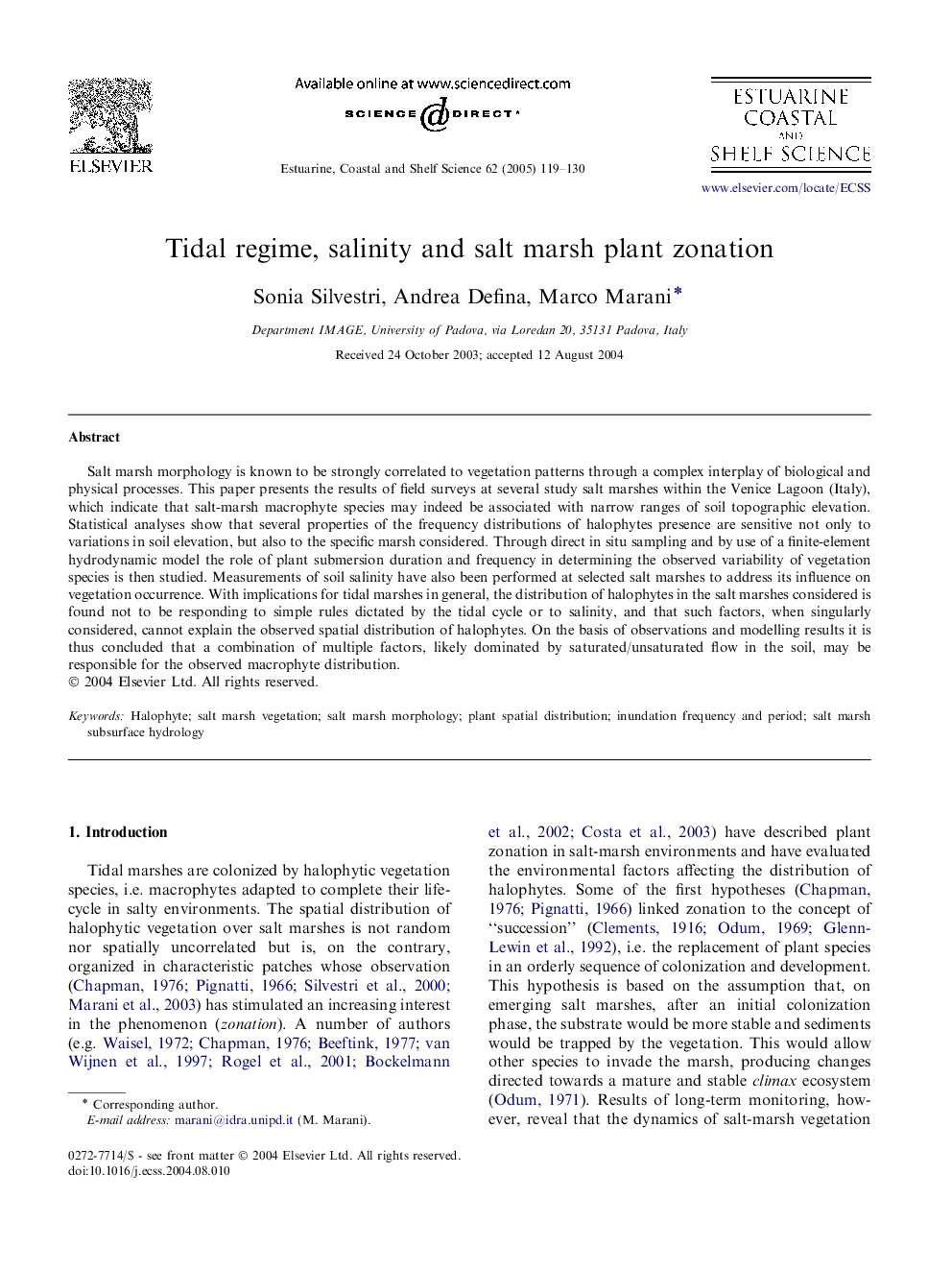| Article ID | Journal | Published Year | Pages | File Type |
|---|---|---|---|---|
| 9480610 | Estuarine, Coastal and Shelf Science | 2005 | 12 Pages |
Abstract
Salt marsh morphology is known to be strongly correlated to vegetation patterns through a complex interplay of biological and physical processes. This paper presents the results of field surveys at several study salt marshes within the Venice Lagoon (Italy), which indicate that salt-marsh macrophyte species may indeed be associated with narrow ranges of soil topographic elevation. Statistical analyses show that several properties of the frequency distributions of halophytes presence are sensitive not only to variations in soil elevation, but also to the specific marsh considered. Through direct in situ sampling and by use of a finite-element hydrodynamic model the role of plant submersion duration and frequency in determining the observed variability of vegetation species is then studied. Measurements of soil salinity have also been performed at selected salt marshes to address its influence on vegetation occurrence. With implications for tidal marshes in general, the distribution of halophytes in the salt marshes considered is found not to be responding to simple rules dictated by the tidal cycle or to salinity, and that such factors, when singularly considered, cannot explain the observed spatial distribution of halophytes. On the basis of observations and modelling results it is thus concluded that a combination of multiple factors, likely dominated by saturated/unsaturated flow in the soil, may be responsible for the observed macrophyte distribution.
Keywords
Related Topics
Physical Sciences and Engineering
Earth and Planetary Sciences
Geology
Authors
Sonia Silvestri, Andrea Defina, Marco Marani,
